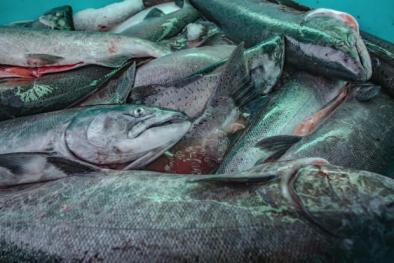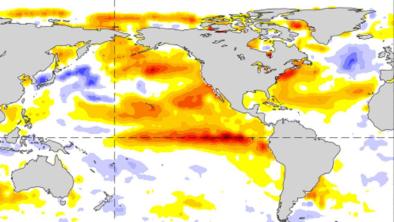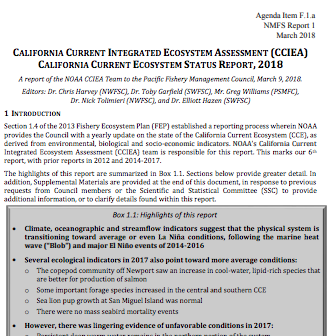Pacific Warm Blob 2013 - 2015
In the winter of 2013-2014 an unusually strong and persistent ridge of atmospheric high pressure, which scientists referred to as the "ridiculously resilient ridge," weakened winds in the northeastern Pacific Ocean, preventing the upwelling of deep, cool ocean water to the surface. As a result, the surface water of the northeastern Pacific developed a large area of unusually warm water that lasted until the strong El Niño of 2015-2016 helped to break up the formation. Climate change may be at least partly responsible for the unprecedented high-pressure weather pattern.




The "Ridiculously Resilient Ridge" leads to warmer, stagnant surface ocean water & Pacific warm blob
The Pacific warm blob likely formed in response to the "ridiculously resilient ridge" (RRR), a phenomenon better known for its role in the California drought. The RRR is a static high pressure region in the atmosphere that—in addition to bringing record-breaking warmth and dryness to California—slows down ocean heat loss to the atmosphere and surface ocean water circulation, causing the surface ocean to become stagnant.[1] The lack of air movement also impacts the wind-forced currents and the wind-generated stirring of surface waters.
California drought study identifies upward trend in anomalous northeastern Pacific ridging
An April 2016 study investigating changes during California's October to May "rainy season” identifies a significant increase in the occurrence of atmospheric patterns associated with certain precipitation and temperature extremes over the 67-year period.[2] The study identifies in particular that both thermal expansion and sea level pressure trends contribute to a notable increase in anomalous northeastern Pacific ridging patterns similar to that observed during the 2012–2015 California drought.[2]
Related Content










